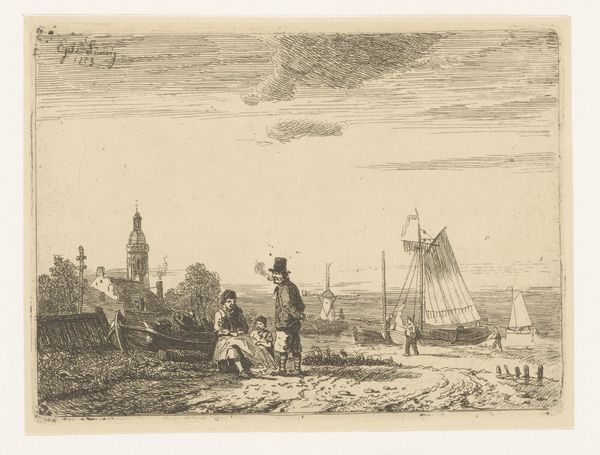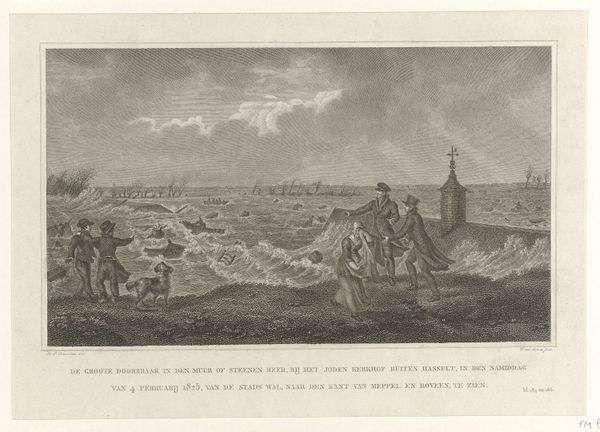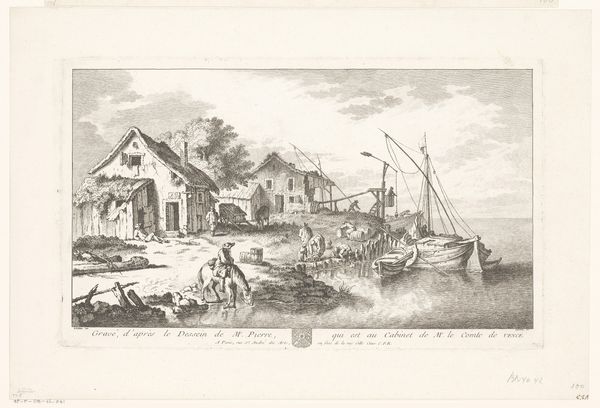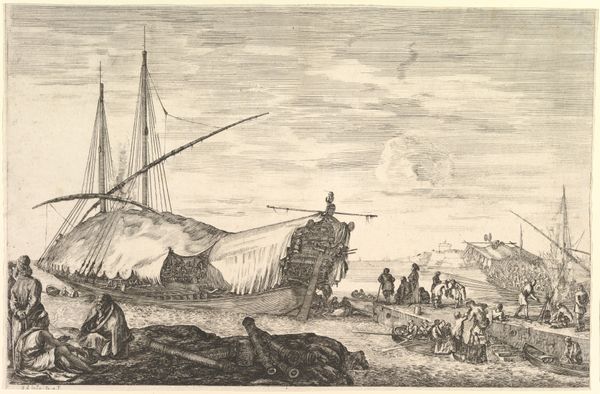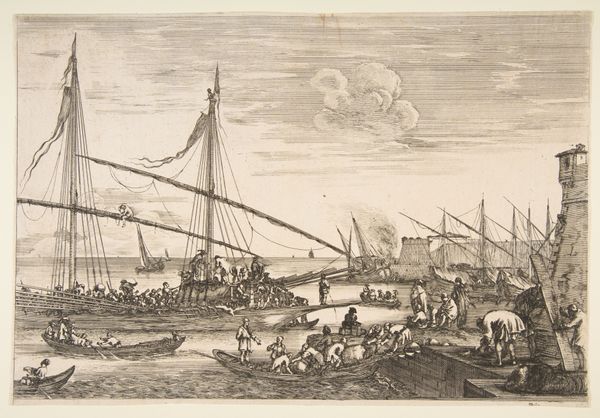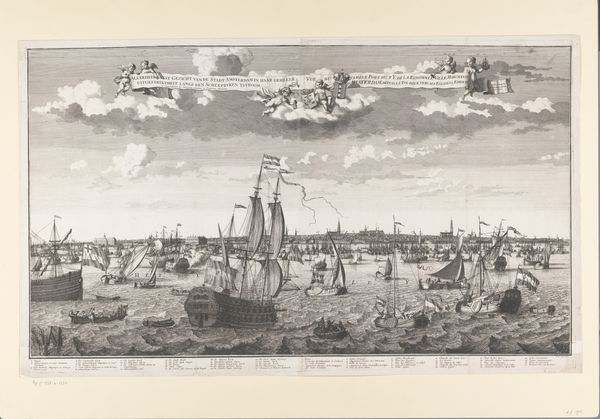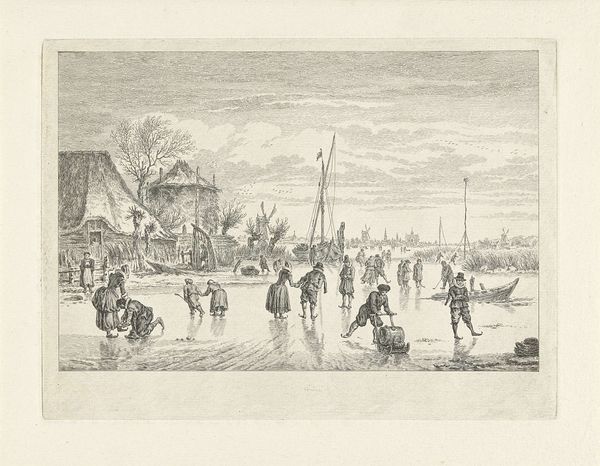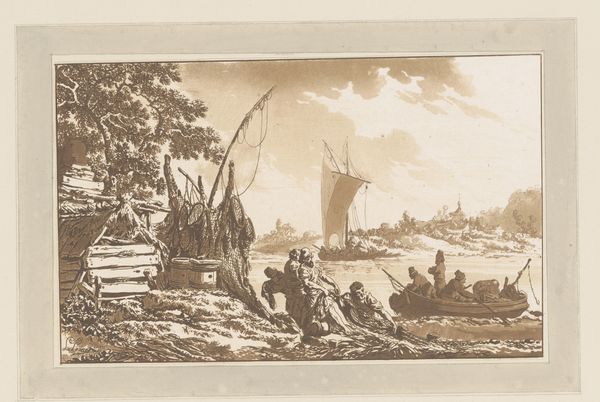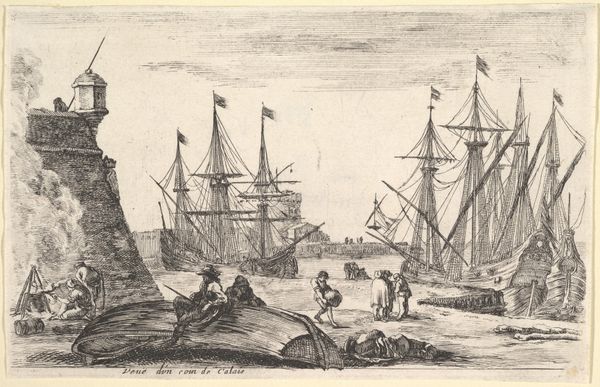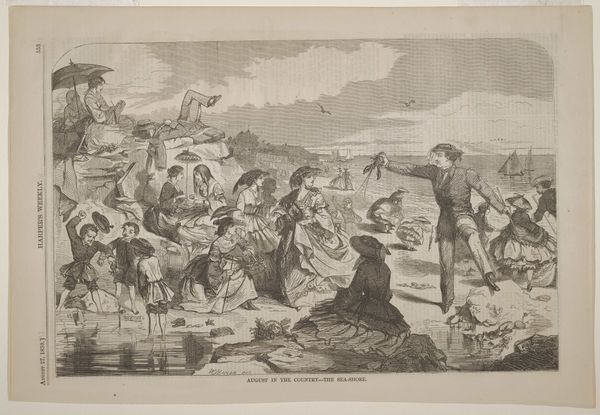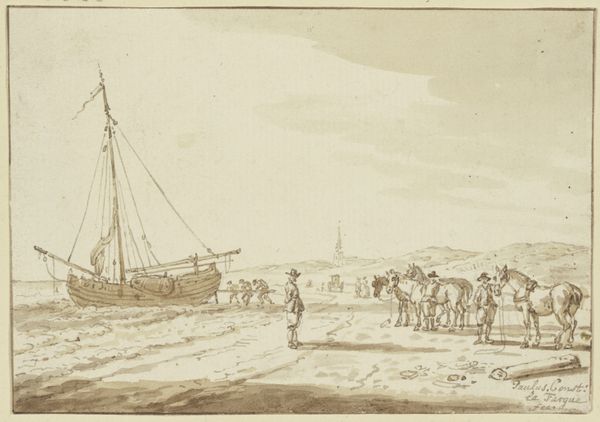
lithograph, print
#
lithograph
# print
#
landscape
#
romanticism
#
genre-painting
Dimensions: 586 mm (height) x 435 mm (width) (bladmaal)
Curator: This lithograph, entitled "Fiskere i færd med at gå ud på fangst," which translates to "Fishermen About to Set Out to Sea," dates from 1830 to 1838 and resides here at the SMK. Editor: There's a quiet drama to this scene. The monochrome palette creates a sort of solemnity, yet the active figures bring so much forward momentum and potential. It looks quite small, physically—are those delicate lines consistent with that era? Curator: Yes, the technique of lithography really lent itself to detailed rendering, even in smaller formats. We're able to see textures in the garments and variations in the sea itself. And as a print, lithography also enabled wider circulation and reproduction, speaking directly to access for wider populations of art lovers. Editor: I am struck by the family dynamics presented here, that we see labor as something for the whole community. Who would we suggest as its key influences, and what was the position of representing daily labor in artistic representations? Curator: During this time, and within the context of Romanticism, genre painting often elevated scenes of everyday life, and fishing was a potent and loaded symbol of both human toil and sustenance and its ties to nationhood. Editor: Right, so what stories were told and re-told by portraying fishing, of labouring on water, of the presumed abundance the sea had to offer? We need to highlight the conditions of work that existed for fisherman and how the profession also shaped identity and class. What do we think about that? Curator: Well, while that does provide vital social commentary, this work seems much less pointed in its critique. Instead, I find the very processes of producing prints such as this, where each mark, shadow, and outline relies heavily on a skilled worker, is evidence itself of the inherent social labor of making things in the first place. That for me gives resonance with some recent contemporary approaches. Editor: I hear you, although I see this representation also through lens of art serving power through its representation of everyday rural life. Curator: Perhaps it can contain both! In the end, our viewing, yours and mine, depend so heavily on our own contexts, making our personal labor crucial to understanding these old images afresh.
Comments
No comments
Be the first to comment and join the conversation on the ultimate creative platform.
